Hallan estatua de madera de un escriba y su esposa en la necrópolis de Saqqara de 4500 años de antigüedad
(1) Una rara estatua doble de madera de un antiguo escriba egipcio y su mujer ha sido encontrada en su tumba al sur de El Cairo, dijo el lunes el jefe de los arqueólogos del país. La imagen sin fechar muestra la doble estatua del escriba del antiguo Egipto Ka-Hay, encargado de recoger todo lo relacionado con lo divino, y de su mujer Spri-Ankh. REUTERS/Macquarie University/Handout (EGYPT). (2) - Fotografía cedida por el Consejo Supremo de Detalle de la puerta falsa de madera de la tumba encontrada en Egipto. Foto: EFE
Una rara estatua doble de madera de un antiguo escriba egipcio y su mujer ha sido encontrada en su tumba al sur de El Cairo, dijo el lunes el jefe de los arqueólogos del país.
La estatua doble, que data de cerca del 2.300 a.C., estaba entre un total de cinco imágenes de madera halladas en el sepulcro en Sakkara, la necrópolis de la ciudad de Memphis, dijo Zahi Hawass presidente del Consejo Supremo de Antigüedades.
El escriba era Ka-Hay, que registraba lo divino, y su esposa, Spri-Ankh. Vivieron al final de la quinta dinastía o al principio de la sexta y fueron enterrados en la parte de la necrópolis asociada al faraón Teti, señaló en un comunicado.
"Es una estatua única (...) normalmente las estatuas dobles están echas de piedra caliza y raramente talladas en madera", agregó Hawass.
La pieza fue descubierta por un equipo egipcio-australiano.
La tumba es una estructura de ladrillos de barro con el estilo clásico de plataforma y tiene una falsa puerta de madera y dos mesas de ofrendas, añadió. Las puertas falsas eran algo habitual en los sepulcros del periodo.
El equipo arqueológico, liderado ahora por Naguib Kanawati de la Universidad Macquarie de Sydney, ha estado trabajando en Sakkara desde el principio de la década de 1970.
Fuente: Reuters, El Cairo, 20 de febrero de 2007
Enlace: http://es.today.reuters.com/News/newsArticle.aspx?
type=entertainmentNews&storyID=2007-02-20T075947Z_01_
CAR028778_RTRIDST_0_OESEN-ESTATUA-EGIPTO.XML
(2) Archaeologists find rare wooden statue in Egypt
This undated photo released by the Egyptian Supreme Council of Antiquities Monday, Feb. 19, 2006 shows an artifact from a recently discovered mud brick tomb dating back to the late fifth dynasty and early sixth dynasty which was found at the Teti necropolis located to the northern side of Teti pyramid in Saqqara, Egypt. The tomb, which was found by an Egyptian-Australian mission, belonged to Ka-Hay, who kept divine records, and his wife, according to Zahi Hawass, Egypts antiquities chief. 11:44 a.m. ET, 2/19/07 (Photo: AP)
A rare double wooden statue of an ancient Egyptian scribe and his wife has been found in their tomb south of Cairo, Egypts chief archaeologist said on Monday.
The double statue, dating from around 2300 BC, was among a total of five wooden statues found at the tomb in Sakkara, the necropolis of the ancient Egyptian city of Memphis, said Zahi Hawass, chairman of the Supreme Council of Antiquities.
The official was Ka-Hay, who kept divine records, and his wife, Spri-Ankh. They lived late in the 5th dynasty or early in the 6th and were buried in the part of the necropolis associated with the pharaoh Teti, he said in a statement.
"It is a unique statue... In general double seated statues are made of limestone and are rarely carved in wood," he said.
The find was uncovered by an Egyptian-Australian team.
The tomb itself is a mud-brick structure of the classic platform style and contains a fine false door in wood and two tables for offerings, he added. False doors are a regular feature of the tombs of the period.
The archaeological team, now led by Naguib Kanawati of Macquarie University in Sydney, has been working at Sakkara since the early 1970s.
Source: Reuters, Cairo, Mon Feb 19, 2007
Link: http://www.archaeologynews.org/story.asp?ID=169102&
Title=Archaeologists%20find%20rare%20wooden%20statue%20in%20Egypt
1.- An Egyptian archaeologist touches up the seam on a relief showing royal cupbearer or butler Ptah Em-Wia arriving home to greetings from his juniors in the Sakkara necropolis, south of Cairo February 20, 2007. REUTERS/Goran Tomasevic
2.- Egypts antiquities chief, Dr. Zahi Hawass, and Maarten Raven, right, the excavations field director and curator at the National Museum of Antiquities in Leiden, Netherlands, inspect engravings on a limestone tomb belonging to a high-ranking royal butler dating back 3,350 years, near the famous Step Pyramid in Saqqara, Egypt Tuesday, Feb. 20, 2007. Archaeologists on Tuesday unveiled ancient tombs bearing intricate hieroglyphics belonging to a butler and a scribe that had remained buried for thousands of years in the sands near Egypts oldest pyramid. (AP Photo/Ben Curtis)
3.- The face of a wooden statue from a more than 4,000-year-old mud brick tomb that belonged to a scribe of divine records and his wife, recently found near the famous Step Pyramid in Saqqara, Egypt and unveiled Tuesday, Feb. 20, 2007. Archaeologists on Tuesday unveiled ancient tombs bearing intricate hieroglyphics belonging to a butler and a scribe that had remained buried for thousands of years in the sands near Egypts oldest pyramid. (AP Photo/Ben Curtis)
4.- Antiquities restorer Abu al-Hassan Ahmed Hussein works on engravings on a limestone tomb belonging to a high-ranking royal butler dating back 3,350 years, near the famous Step Pyramid in Saqqara, Egypt Tuesday, Feb. 20, 2007. Archaeologists on Tuesday unveiled ancient tombs bearing intricate hieroglyphics belonging to a butler and a scribe that had remained buried for thousands of years in the sands near Egypts oldest pyramid. (AP Photo/Ben Curtis)
5.- Antiquities restorer Abu al-Hassan Ahmed Hussein works on engravings on a limestone tomb belonging to a high-ranking butler royal butler dating back 3,350 years, near the famous Step Pyramid in Saqqara, Egypt Tuesday, Feb. 20, 2007. Archaeologists on Tuesday unveiled ancient tombs bearing intricate hieroglyphics belonging to a butler and a scribe that had remained buried for thousands of years in the sands near Egypts oldest pyramid. (AP Photo/Ben Curtis)
6.- Tape holds together the fragile paintwork on one of two wooden coffins belonging to a priest and his girlfriend, which date back about 4,000 years and were recently found near the famous Step Pyramid in Saqqara, Egypt and unveiled Tuesday, Feb. 20, 2007. Archaeologists on Tuesday unveiled ancient tombs bearing intricate hieroglyphics belonging to a butler and a scribe that had remained buried for thousands of years in the sands near Egypts oldest pyramid. (AP Photo/Ben Curtis)
7.- Archaeological workers remove a wooden statue from a more than 4,000-year-old mud brick tomb that belonged to a scribe of divine records and his wife, near the famous Step Pyramid in Saqqara, Egypt Tuesday, Feb. 20, 2007. Archaeologists on Tuesday unveiled ancient tombs bearing intricate hieroglyphics belonging to a butler and a scribe that had remained buried for thousands of years in the sands near Egypts oldest pyramid. (AP Photo/Ben Curtis)
8.- An Egyptian policeman riding a camel looks on as archaeological workers remove a wooden statue from a more than 4,000-year-old mud brick tomb that belonged to a scribe of divine records and his wife, near the famous Step Pyramid in Saqqara, Egypt Tuesday, Feb. 20, 2007. Archaeologists on Tuesday unveiled ancient tombs bearing intricate hieroglyphics belonging to a butler and a scribe that had remained buried for thousands of years in the sands near Egypts oldest pyramid. (AP Photo/Ben Curtis)
9.- Egypts chief archaeologist, Zahi Hawass, examines a wooden statue of the ancient Egyptian scribe Ka-Hay, one of three statues found in a cache in the Sakkara necropolis, south of Cairo February 20, 2007. The statue, discovered recently by an Egyptian-Australian team of archaeologists, dates from about 2200 BC. REUTERS/Goran Tomasevic (EGYPT)
10.- An Egyptian archaeologist point his finger at a relief showing royal cupbearer or butler Ptah Em-Wia arriving home to greetings from his juniors in the Sakkara necropolis, south of Cairo February 20, 2007. A Dutch mission found Ptah Em-Wias tomb in the Sakkara necropolis south of Cairo this year. Dating from about 1300 BC, it is one of the very few tombs in the area from the period of the pharaoh Akhenaten, who promoted a distinctive style of art. REUTERS/Goran Tomasevic (EGYPT)
11.- Egypts chief archaeologist, Zahi Hawass, poses next to a wooden statue of the ancient Egyptian scribe Ka-Hay, one of three statues found in a cache in the Sakkara necropolis, south of Cairo February 20, 2007. The statue, discovered recently by an Egyptian-Australian team of archaeologists, dates from about 2200 BC. REUTERS/Goran Tomasevic (EGYPT)
12.- Workers carry a wooden statue of the ancient Egyptian scribe Ka-Hay, one of three statues found in a cache in the Sakkara necropolis, south of Cairo February 20, 2007. The statue, discovered recently by an Egyptian-Australian team of archaeologists, dates from about 2200 BC. REUTERS/Goran Tomasevic (EGYPT)
13.- Wooden statues of the ancient Egyptian scribe Ka-Hay, two of three statues found in a cache in the Sakkara necropolis, lie on the ground near the tomb south of Cairo February 20, 2007. The statues, discovered recently by an Egyptian-Australian team of archaeologists, dates from about 2200 BC. REUTERS/Goran Tomasevic (EGYPT)
14.- A wooden statue of the ancient Egyptian scribe Ka-Hay, one of three statues found in a cache in the Sakkara necropolis lies on the ground in a tomb south of Cairo February 20, 2007. The statue, discovered recently by an Egyptian-Australian team of archaeologists, dates from about 2200 BC. REUTERS/Goran Tomasevic (EGYPT)
15.- Wooden statues of the ancient Egyptian scribe Ka-Hay, two of three statues found in a cache in the Sakkara necropolis, lie on the ground in a tomb south of Cairo February 20, 2007. The statues, discovered recently by an Egyptian-Australian team of archaeologists, dates from about 2200 BC. REUTERS/Goran Tomasevic (EGYPT)
3,000-year-old tombs are found in Egypt
SAQQARA, Egypt - Archeologists unveiled Tuesday the tombs of a Pharaonic butler and scribe that had been buried in the sand for more than 3,000 years.
The tombs, along with the painted coffins of a priest and his girlfriend, were discovered early this year at Saqqara near the famous Step Pyramid of King Djoser the oldest of Egypts more than 90 pyramids.
"The sands of Saqqara reveal lots of secrets," said Egypts antiquities chief, Zahi Hawass, as he showed reporters around a 4,000-year-old tomb of mud bricks that belonged to a scribe of divine records, Ka-Hay, and his wife.
"It doesnt look great because it was built from mud brick and not built of limestone, but I really believe that this tomb is very important," said Hawass, who was wearing his Indiana Jones-style hat. "This type of tomb could enrich our knowledge about the people who actually surrounded the kings of Saqqara, especially the people who lived 4,200 years ago."
The tomb featured a dark wooden door, which ancient Egyptians believed that the souls of the dead would use to leave their tomb. The door bore engravings in hieroglyphic text and pictures of the scribe and his wife.
South of the Step Pyramid, archeologists unveiled a second tomb, which belonged to a butler who died 3,350 years ago. Carved out of limestone, the tomb contained murals that showed scenes of people performing rituals and monkeys eating fruit. The blue and orange colors of the paint were surprisingly well preserved.
"This is a very, very lively scene," said Maarten Raven, the excavations director and a curator at the National Museum of Antiquities in Leiden, Netherlands.
Raven said he believed other tombs from the New Kingdom, similar to the one unveiled Tuesday, had yet to be uncovered in Saqqara, which is famous for Old Kingdom antiquities. Many of the New Kingdom tombs, which date back from 1570 B.C. to 1070 B.C., can be found in the southern Egyptian city of Luxor.
"We hope one day this area will be open to visitors so people can see that Saqqara is not only Old Kingdom but New Kingdom as well," Raven said.
Hawass also unveiled two wooden coffins, 4,000 years old, that were found south of the Step Pyramid. The coffins, painted light orange with blue hieroglyphics, contained human-shaped coffins known as anthropoids, in which lay the mummies of a priest and his girlfriend, Hawass said.
The ancient Egyptians believed anthropoids acted as a substitute body for the dead.
Although archaeologists have been exploring Egypt intensively for more than 150 years, Hawass believes only 30 percent of what lies under the sands at Saqqara has been uncovered.
Saqqara, about 12 miles south of Cairo, hosts a collection of temples, tombs and funerary complexes. Its Step Pyramid is the forerunner of the more sophisticated pyramids in Giza, which are believed to have been built about a century later.
Source: By ANNA JOHNSON, Associated Press Writer
Link: http://news.yahoo.com/s/ap/egypt_
tombs;_ylt=AlTAVc1CR_Y4_7yb.9wl_.PmWMcF
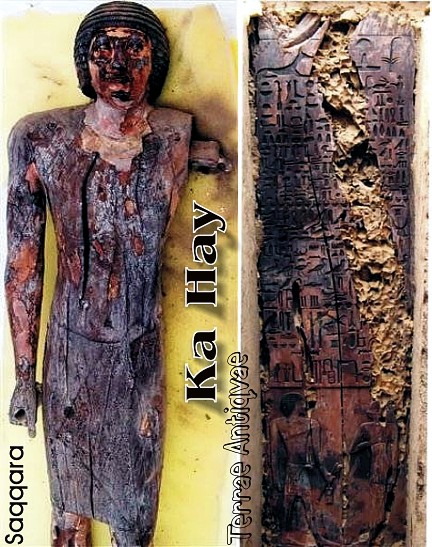
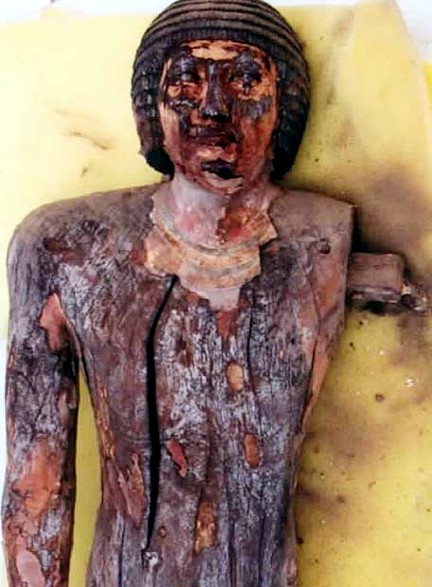
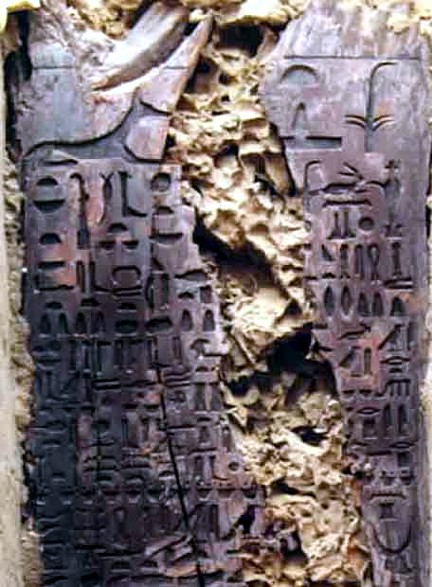
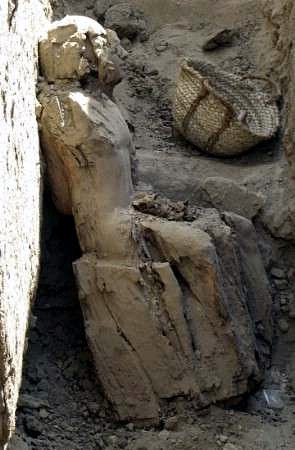
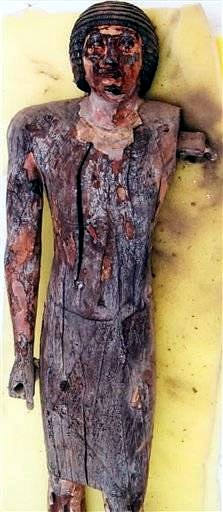
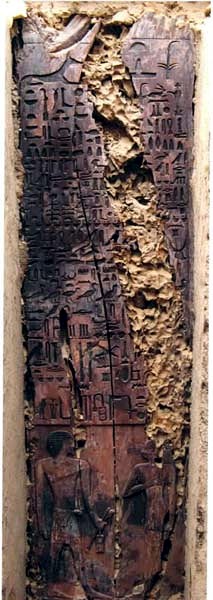
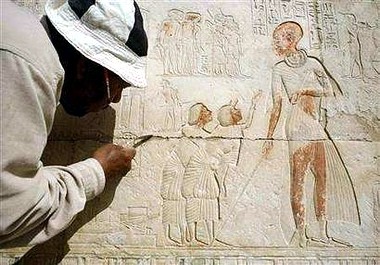
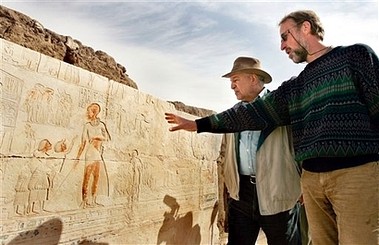
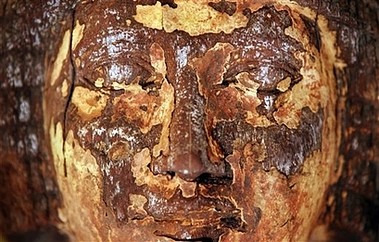
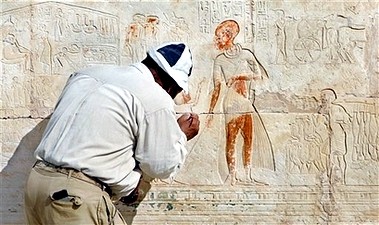
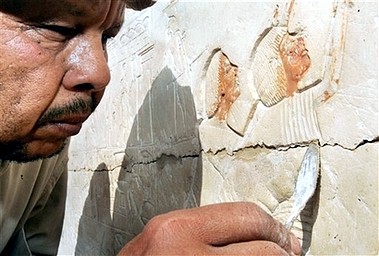
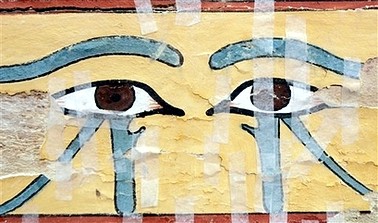
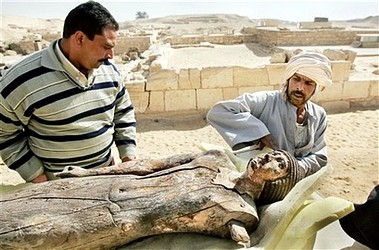
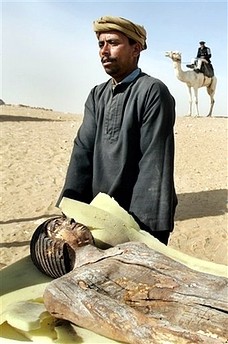
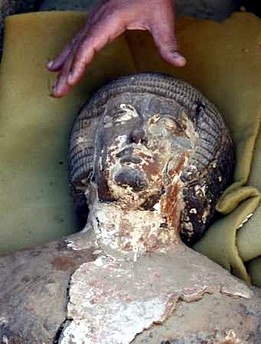
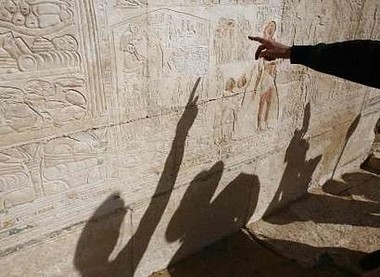
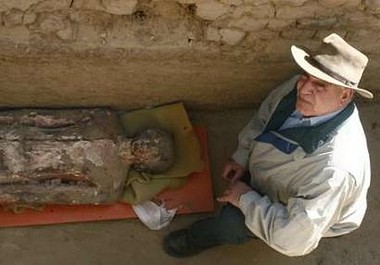
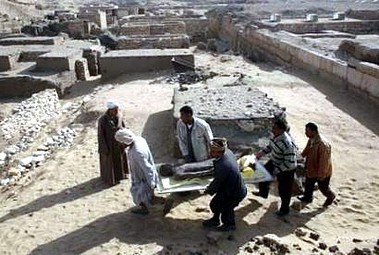

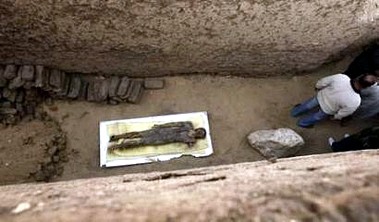
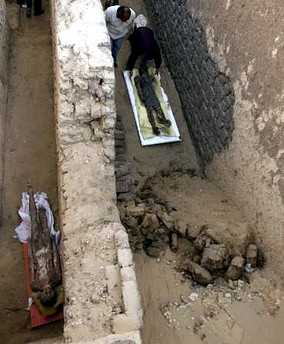
0 comentarios